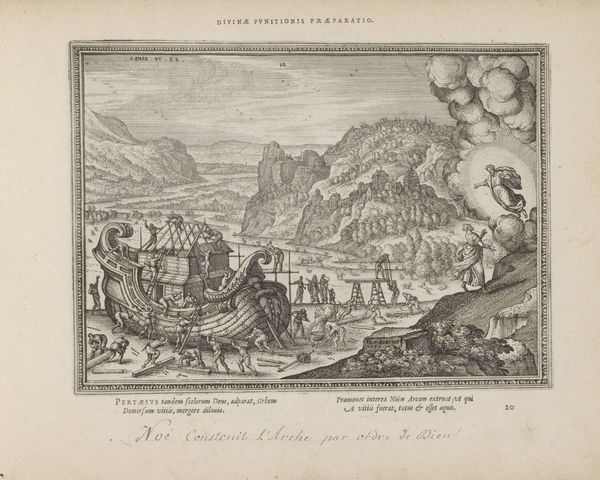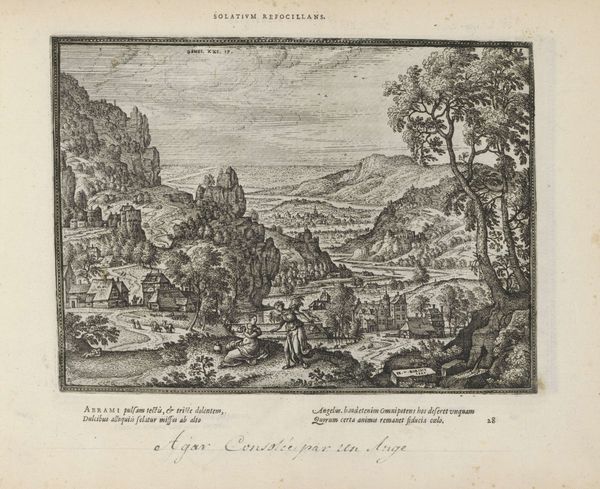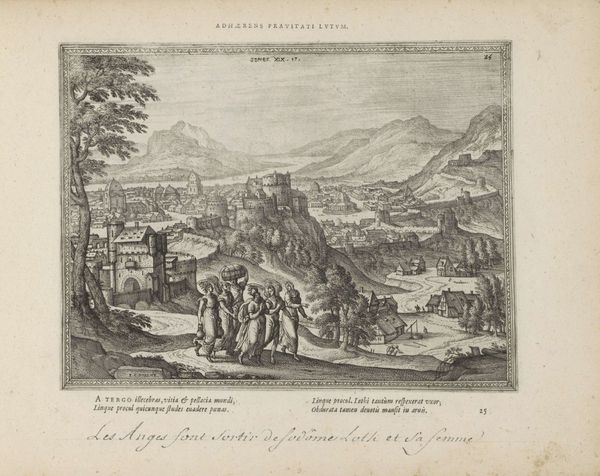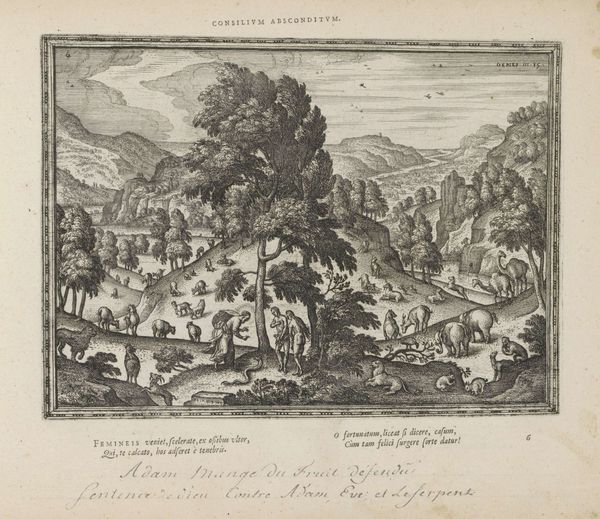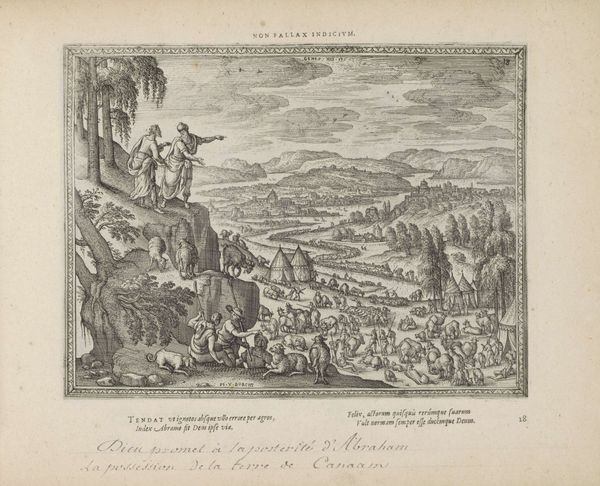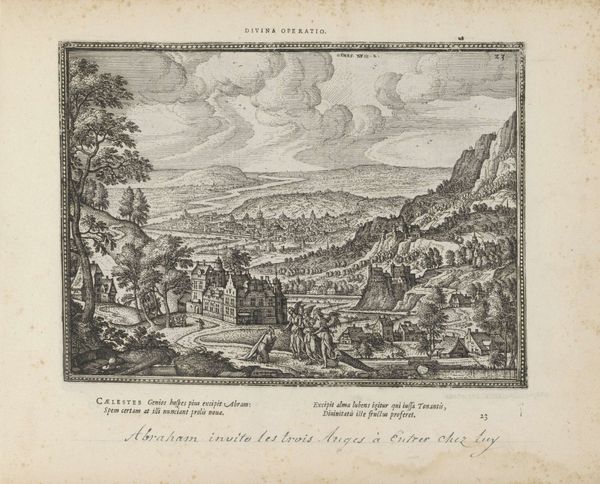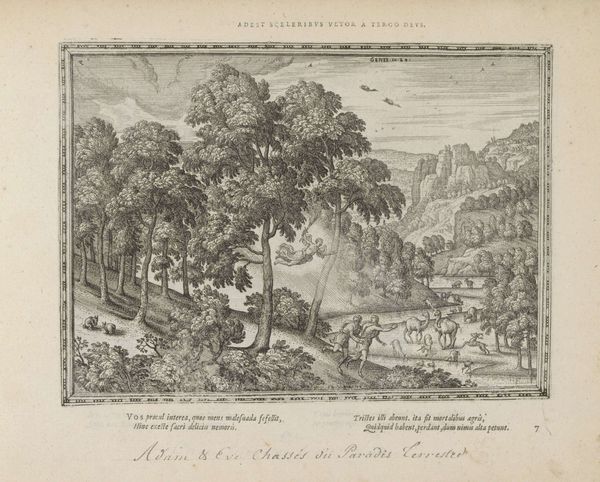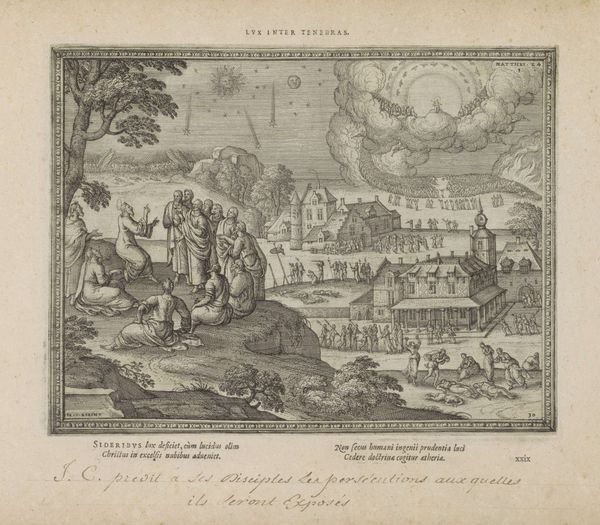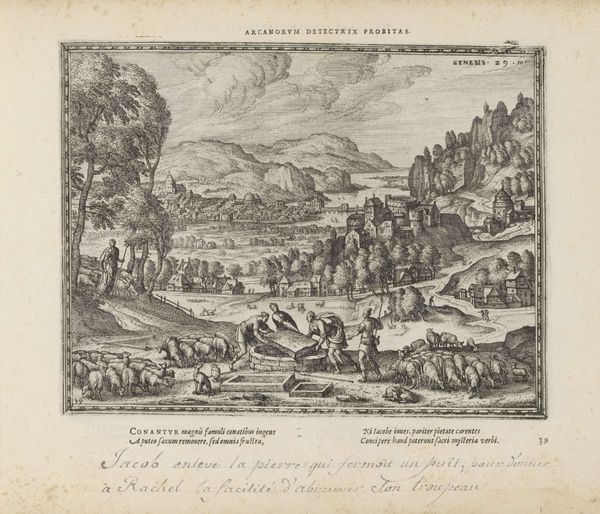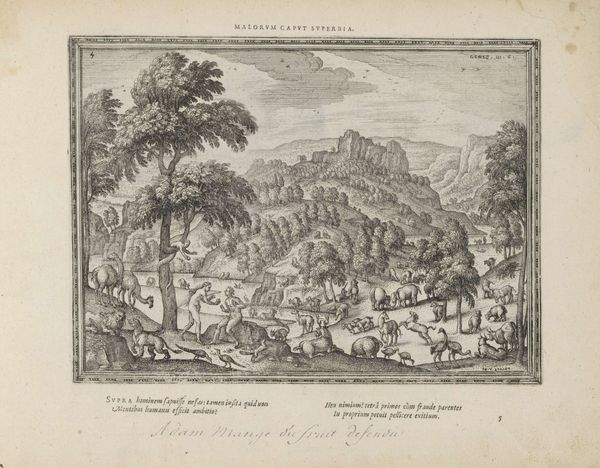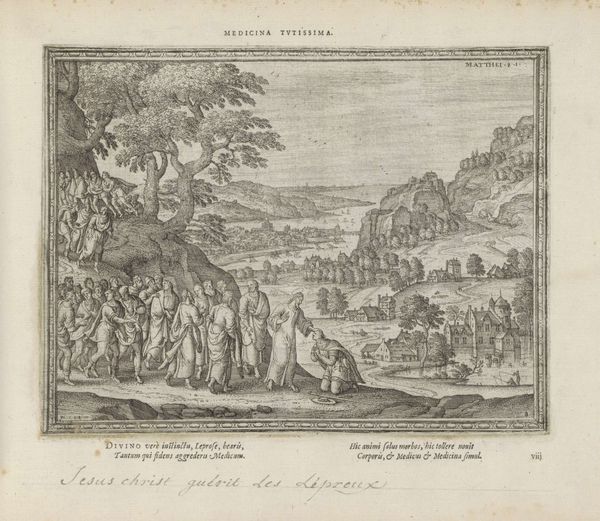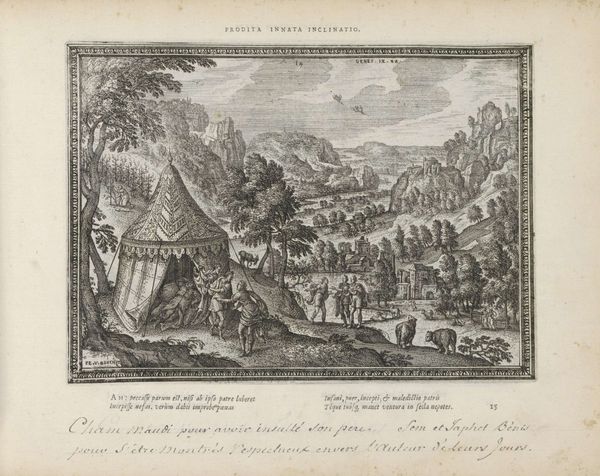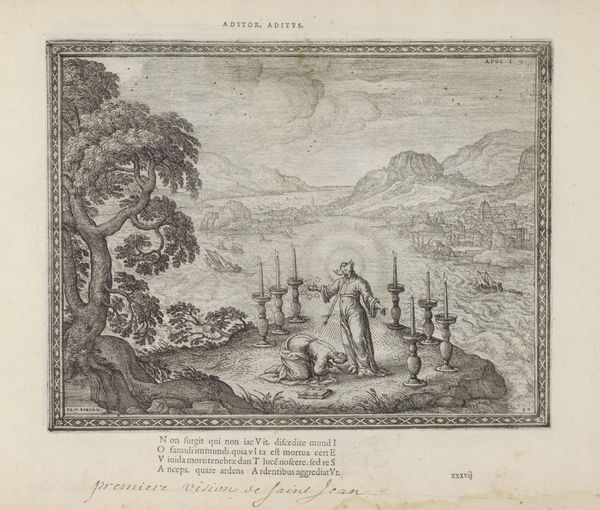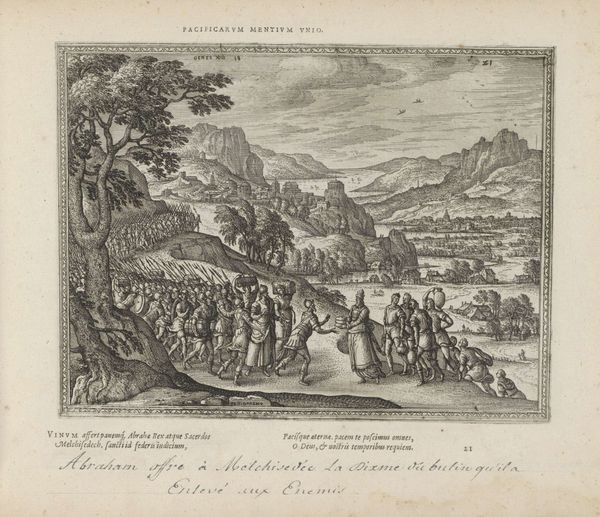
print, etching, engraving
#
narrative-art
# print
#
etching
#
landscape
#
history-painting
#
northern-renaissance
#
engraving
Dimensions: height 189 mm, width 244 mm
Copyright: Rijks Museum: Open Domain
Curator: This print, attributed to Pieter van der Borcht the Elder, is titled *God zegent Jakob en noemt hem Israel*, or "God Blesses Jacob and Names Him Israel." Created sometime between 1582 and 1613, it resides now in the collection of the Rijksmuseum. Editor: The etching presents itself as quite unassuming at first glance, with a rather limited palette, though it actually holds within its modest scale an unexpectedly expansive vista. The composition strikes me as really intricate; almost architectural in its careful rendering. Curator: Van der Borcht masterfully uses the medium of etching to tell this biblical story. Notice how the figures of God and Jacob are dwarfed by the vast landscape; a representation of the overwhelming power of divine intervention in human affairs. Symbolically, this spatial relationship reminds us of humanity's relative insignificance in the grand cosmic order. Editor: From a production standpoint, what impresses me most is the precise rendering of the textures within this landscape, particularly when noting the scale. The level of detail he achieves using what I see are comparatively simple tools is impressive. You know, I can almost feel the work put in and the labor of production it demanded. Curator: Precisely, and in this case it may indicate how the art served a didactic function: accessible and reproducible for a broad audience seeking religious guidance, conveying not just narrative but also a particular ethos of hard work, moral uprightness and God's presence and protection of the Israelites.. Editor: A definite demonstration of the intersection of material and meaning, highlighting how an everyday item could possess deep significance. Appreciating how readily images like this would have spread then really underscores the potent effects this engraving could possess at that historical moment. Curator: It serves to remember the relationship between faith and everyday toil, and a relationship that even informs how landscapes, literal territories, might symbolize identity formation, promise, and hope. Editor: And considering all the steps, it provides an object to contemplate its production from the preparation of metal to the economics and accessibility of religious interpretation for all people at all different stages of consumption.
Comments
No comments
Be the first to comment and join the conversation on the ultimate creative platform.
